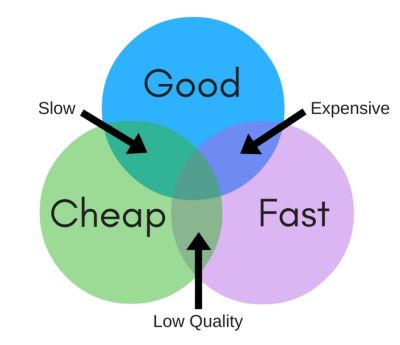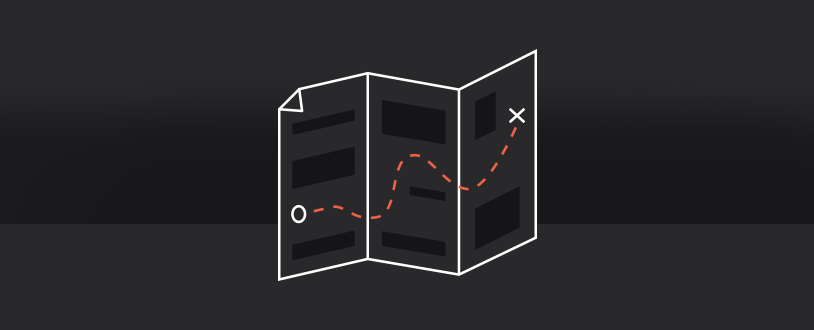Creating a Blueprint for a Successful CMS Migration
Chris Osterhout SVP of Strategy#CMS, #Episerver, #Digital Strategy

What's the best approach to a website migration project? We look at how creating an implementation blueprint can build a solid foundation for your migration.
In today’s fast-moving technological landscape, organizations need to make use of multiple interconnected systems, and the tools that they use are constantly evolving. In this environment of regular change, companies may find that their current systems don’t provide them with the capabilities that they need to meet their business goals.
If you’ve determined that you need to migrate away from your current content management system (CMS) to a more enterprise platform (or if you’re an Ektron customer who is thinking about migrating to Episerver, you’re probably wondering how to get started, and what you need to be aware of in the migration process.
In reality, there are a lot of ways to get started, but the approaches that companies take often break down into two categories. Let’s look at each of these, the reasons why they won’t necessarily lead to the best results, and how a different approach can help you plan for success in your digital strategy:
Option 1: Determine a Price, Then Move Forward
From a business perspective, it makes sense to nail down the cost of migrating your website, so you can plan your budget accordingly. Unfortunately, the price of a CMS migration is usually not a single, solid number, but a range that can vary depending on your organization’s needs and the complexity of the migration.
While an estimated cost of migration can be helpful as a baseline, it won’t help you understand what the true cost of the migration will be. This is why we encourage our clients to form partnerships rather than asking for quotes.
Option 2: Create a Proof of Concept
Clients often ask for or software manufacturers will offer a proof of concept (POC), demonstrating what the website will look like following the migration to a new CMS platform. This option usually requires significant investment, either in the software platform the POC is built on or with the firm who is creating the POC.
While this solution may be helpful in understanding how your site could theoretically function on the new platform, a POC is not a fully functional site, and it won’t help you understand how to get from where you are now to where you want to be following your migration.
A Better Solution: Create an Implementation Blueprint
One analogy that we often return to when we discuss website redesigns and CMS migrations is a comparison between a new website and a house. If you’re building a new house, one of the first things you will do is create a blueprint. This helps you understand how all the pieces of the house will fit together, and it helps you ensure that the house will be structurally sound and provide you with a space where you want to live.
The same holds true when building a new website. Before you get started, you’ll need an implementation blueprint that defines, qualifies, and quantifies everything needed to build the site, ensuring that it is created correctly and includes all the technical functionality and integrations you need to meet your business goals.
As is true of the blueprint for a home, an implementation blueprint for your website will require a cost, but this minimal investment can help you understand your options and make informed decisions on the road ahead.
Getting It Right the First Time
At Diagram, one thing we stress when approaching website redesign and migration projects is the importance of doing things right the first time. Creating an implementation blueprint will allow you to understand everything you need to know in order to move to your new platform, allowing you to do so in a realistic time frame and with minimal change requests.
When planning a website migration, stakeholders often consider three aspects: quality, time, and price. You may have seen a diagram like this that states that only two of these three aspects are possible:

Ideally, you want to get as close to the middle of that picture as you can, even if it’s not going to be possible to complete your migration in a manner that is good, fast, and cheap. However, creating an implementation blueprint is the key to getting as close to that ideal state as possible, and it will provide an essential foundation for the success of your migration project.
If you have any questions about how we can help you create an implementation blueprint for your own website project, please contact us, and we’ll not only help you migrate to a platform that meets your needs, but we’ll work with you to build a successful digital strategy. If you have any questions, please feel free to share them in the comments below.
Related Posts

Cloud CMS Migration: Costs, Benefits & Insights
Migrating to a cloud CMS platform represents a strategic (and necessary) investment in the future of digital content management. Here's what you need to know.

4 Ways to Avoid Disaster When Migrating CMS Platforms
If you have ever migrated from one content management system (CMS) or eCommerce platform to another, you know how many unexpected issues can occur during the migration process.
Results Matter.
We design creative digital solutions that grow your business, strengthen your brand and engage your audience. Our team blends creativity with insights, analytics and technology to deliver beauty, function, accessibility and most of all, ROI. Do you have a project you want to discuss?
Like what you read?
Subscribe to our blog "Diagram Views" for the latest trends in web design, inbound marketing and mobile strategy.
